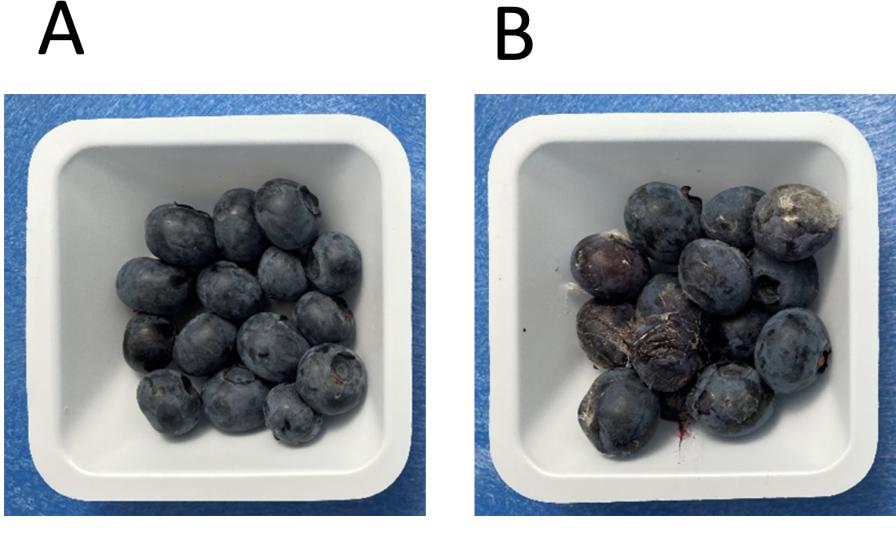Nationwide Project Going In Search of Better Berries
When it comes to blueberries, growers care most about quality, and Massimo Iorizzo, an Associate Professor in Horticultural Science at North Carolina State University, says that’s a very good thing.
A survey of growers serves as the basis for a project Iorizzo is directing, “Vaccinium CAP: Leveraging genetic and genomic resources to enable development of improved blueberry and cranberry cultivars to growers and consumers,” which has been funded by a USDA Specialty Crops Research Initiative (SCRI) grant.
Armed with the knowledge that growers care more about taste and texture than making them easier to grow or saving pesticides, researchers are laser-focused on finding out exactly what determines fruit quality. Iorizzo likens VacCAP, as it’s known, to a similar project that also has fruit quality as its top objective, RosBREED. What RosBREED has done for crops in the Rosaceae families — such as apple, cherry, peach, pear, strawberry, and roses, as well as blackberry, peach, and cherry rootstocks — coordinating breeding and genomics-based approaches, Iorizzo would like to see applied to Vaccinium.
At the annual project meeting in November, Iorizzo and his team of university researchers from around the country laid out the objectives for the project. In addition, the team identified specific goals, which were grouped into what the project’s success would look like in four areas: discovery, engagement, education, and in the long term.
OBJECTIVES
• Establish genomic resources to enable effective association mapping studies in blueberry and cranberry.
• Discover DNA markers and fruit characteristics that maximize industry profitability and match consumer preferences in blueberry and cranberry.
• Deliver molecular and genetic resources to improve blueberry and cranberry fruit quality traits that maximize industry profitability and match consumer preferences.
• Assess the potential socio-economic impact of blueberry and cranberry fruit quality improvements on market demand.
• Engage U.S. Vaccinium breeders and stakeholder groups to transfer advanced phenomics and genomics tools to build a more coordinated and efficient cultivar development system.
DISCOVERY
VacCAP project outputs will increase the knowledge of:
• Genetic mechanisms and genes controlling economically important traits including fruit characteristics.
• The relationships between fruit characteristics and fruit quality (shelf life, texture, bruising and sensory traits).
• Consumer behavior and interests regarding blueberry fruit quality and cranberry products.
• New Vaccinium stakeholder priorities for the sustainability and profitability of the industry.

Blueberry samples after six weeks of storage at 3°C/95% RH. Berries from plant A (left) were very firm, had good taste and no wrinkle, mold, or leakage. Berries from plant B (right) were very soft with extensive mold, wrinkle, and leakage.
Photo by Marti Pottorf
ENGAGEMENT
VacCAP deliverables and outcomes will be used by the Vaccinium community for the following goals:
• VacCAP DNA tools and phenotyping methods will be utilized by VacCAP PIs and the Vaccinium community worldwide to advance breeding and/or research programs.
• VacCAP outcomes will be used by growers, processors, and distributors to plan production and distribution strategies.
LONG-TERM
• Increased ability of blueberry and cranberry growers, processors and distributors to market a higher percentage of premium fruit using improved cultivars without increased production costs.
• Increased consumption of blueberry and cranberry products in the U.S. and worldwide due to improved fruit quality.
• Increased efficiency of Vaccinium breeding programs for selection and improvement of fruit quality traits important to consumers and industry.
• Increased profitability, competitive-ness, and sustainability of Vaccinium industries.
They also shared updates on the progress of the projects. During the last two years, the team has made extensive progress on all objectives. New methods for evaluating fruit characteristics were developed. Examples include a system that can simultaneously collect firmness, size and shelf-life indicators (wrinkle, mold, leakage) data; a new method to evaluate sugar content; and a QR code system to track samples that are being distributed across laboratories.
Over 4,000 and 1,200 blueberry and cranberry plants, respectively, were evaluated for several quality characteristics, including size, firmness, shelf-life, color, and chemical composition (e.g. sugar content, acidity). Extensive variation for all characteristics were found. For instance, some blueberry plants had fruit that were completely shriveled and with leakage after six weeks of storage, but others had fruit that were very firm, and with very good flavor.
“We’re starting to understand the genetics of some fruit quality traits, which is new,” Iorizzo says. For the first time, DNA markers were associated with pH, titratable acidity, and soluble solid content in blueberry.
Iorizzo encourages interested growers to visit the VacCAP website, sign up for newsletters, and check out the videos, including one new one on using a refractometer to evaluate blueberries’ Brix.









